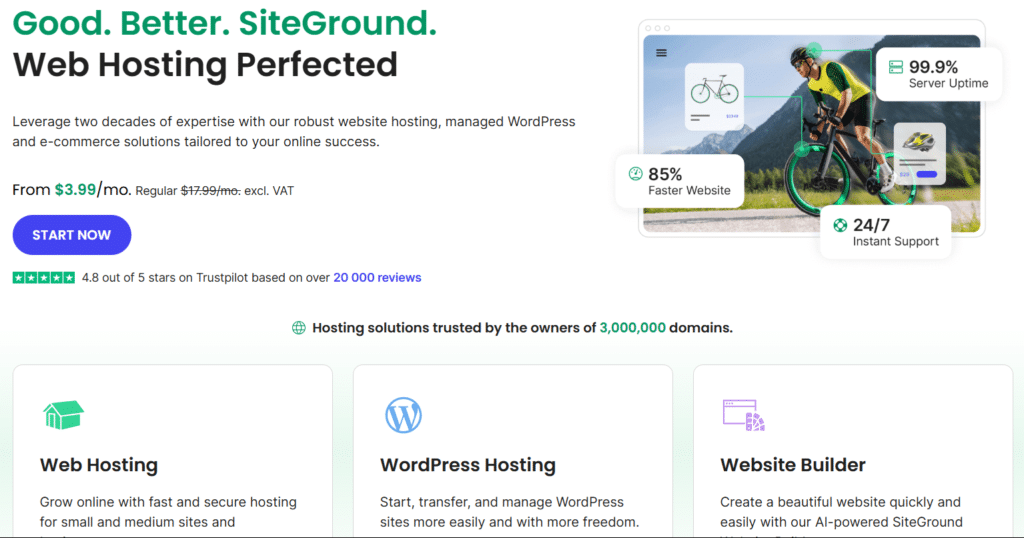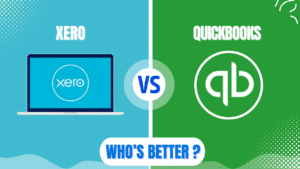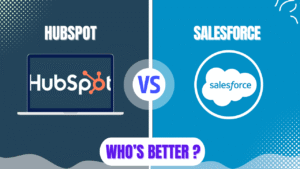I do not recommend GoDaddy hosting for most website owners in 2025 despite its decent server response times and 99.9% uptime guarantee. GoDaddy lacks advanced optimization features like LiteSpeed servers, has limited global data centers, and shows inconsistent performance under high traffic. While their domain services remain strong and they offer good US-based performance, alternatives like Hostinger provide better speed, more global data centers, and superior value at lower prices.
Overview and Performance
GoDaddy has established itself as one of the most recognizable names in the web hosting industry since its founding in 1997. The company serves millions of customers worldwide and maintains a dominant position in the domain registration market.
Recent performance testing in 2025 shows GoDaddy achieving impressive server response times averaging 179-198ms, significantly better than the industry standard of 600ms. This quick response time contributes to better user experience and potentially improved search engine rankings.

Uptime testing reveals mixed results, with some tests showing 100% uptime over short periods, while longer-term monitoring indicates a more realistic 99.98% uptime with occasional outages. This performance still exceeds GoDaddy’s 99.9% uptime guarantee but falls short of competitors like Hostinger’s perfect 100% uptime in comparable tests.
Load time tests demonstrate good performance for US-based visitors, with Largest Contentful Paint (LCP) measurements of 822ms in the US, 752ms in the UK, and 2.1s in India. These times remain within Google’s recommended 2.5-second threshold for optimal user experience.
| Performance Metric | GoDaddy Result | Industry Comparison |
|---|---|---|
| Server Response Time | 179-198ms | Industry avg: 600ms |
| Uptime | 99.98% | Below Hostinger (100%) |
| US Load Time (LCP) | 822ms | Good (under 1s) |
| UK Load Time (LCP) | 752ms | Good (under 1s) |
| India Load Time (LCP) | 2.1s | Acceptable (under 2.5s) |
GoDaddy’s performance under load shows adequate but not exceptional results. Testing with 50 virtual visitors resulted in response times ranging from 182ms (fastest) to 383ms (slowest), with an average of 198ms. While functional, these metrics lag behind competitors like Hostinger (58ms average) and SiteGround (149ms average) under similar conditions.
Geographic performance is limited by GoDaddy’s server locations, which are primarily in the US with additional data centers in the Netherlands and Singapore. This restricted global presence may impact loading speeds for visitors from other regions, particularly Asia and Australia.
Features and Pricing
GoDaddy offers a range of hosting plans designed to accommodate different business needs and budgets. The shared hosting plans include essential features like unmetered bandwidth, automatic daily backups, and a 99.9% uptime guarantee.
All plans include free SSL certificates for the first year, providing essential security and helping with search engine rankings. However, renewal fees apply after the initial period, unlike many competitors that now include SSL certificates permanently for free.

The Web Hosting Deluxe plan, used in many performance tests, delivers solid performance with NVMe SSD storage that contributes to the fast loading speeds. This storage technology is particularly beneficial for media-heavy sites requiring quick data access.
| Plan Feature | Economy | Deluxe | Ultimate | Maximum |
|---|---|---|---|---|
| Storage | 25GB SSD | 50GB SSD | 75GB SSD | 100GB SSD |
| Websites | 1 | Unlimited | Unlimited | Unlimited |
| Free Domain | 1 year | 1 year | 1 year | 1 year |
| Free SSL | 1 year | 1 year | 1 year | 1 year |
| Automatic Backups | Daily | Daily | Daily | Daily |
GoDaddy’s pricing structure positions it in the mid-range of hosting providers, more expensive than budget options like Hostinger but offering fewer advanced features than similarly priced competitors like SiteGround. The promotional pricing is competitive, though renewal rates increase substantially.
The platform includes access to The Hub by GoDaddy Pro, which provides tools for efficiently managing projects, invoicing clients, and handling site management tasks. This feature is particularly valuable for web professionals managing multiple client websites.
Security features include 24/7 monitoring to detect suspicious activity and help deflect DDoS attacks. The hosting environment receives regular security updates to protect against known vulnerabilities, though advanced security features may require additional purchases.
Performance Optimization
GoDaddy’s performance can be improved through several optimization techniques, though the platform lacks some advanced features found in competitors. The company’s servers support PHP 8.0, which can significantly enhance performance when upgraded from older versions.
Speed optimization options include adding Cloudflare’s free CDN, which can improve global performance by caching content closer to visitors worldwide. This integration helps mitigate some of the limitations of GoDaddy’s restricted data center locations.
Resource-intensive plugins should be avoided on GoDaddy hosting, as they can significantly impact server response times. Performance testing indicates that GoDaddy’s shared hosting environment may struggle with high resource demands compared to competitors.
| Optimization Technique | Benefit | Implementation Difficulty |
|---|---|---|
| PHP 8.0 Upgrade | Improved processing speed | Easy (cPanel setting) |
| Cloudflare CDN | Better global performance | Moderate (DNS change) |
| Plugin Optimization | Reduced resource usage | Moderate (testing required) |
| Caching Implementation | Faster repeat visits | Easy to Moderate |
| Image Optimization | Reduced page weight | Easy |
WordPress optimization on GoDaddy shows decent results, with the platform handling WordPress sites effectively. However, it lacks the specialized WordPress features and optimizations found in dedicated WordPress hosts like WP Engine or SiteGround.
The absence of LiteSpeed web servers represents a significant limitation compared to hosts like Hostinger. LiteSpeed technology can deliver up to 20x faster performance than traditional Apache servers, particularly beneficial for WordPress sites.
GoDaddy vs. Competitors
When compared to other popular hosting providers, GoDaddy demonstrates distinct strengths and limitations that influence its suitability for different use cases.
GoDaddy vs. Hostinger
Hostinger outperforms GoDaddy in several key areas despite its lower price point. Hostinger achieved perfect 100% uptime in comparative tests where GoDaddy reached 99.98%, and offers nine global server locations compared to GoDaddy’s three.
Hostinger outperforms GoDaddy in several key areas despite its lower price point. Hostinger achieved better uptime in comparative tests and offers nine global server locations compared to GoDaddy’s thr

ee.
| Feature | GoDaddy | Hostinger |
|---|---|---|
| Starting Price | $6.99/month | $2.78/month |
| Storage (Basic Plan) | 25 GB SSD | 100 GB SSD |
| Free SSL | Yes (1 year on Economy) | Yes (permanent) |
| Free Domain | Yes (1 year) | Yes (1 year) |
| Automated Backups | Daily | Weekly |
| Server Locations | 3 countries | 9 countries |
GoDaddy vs. SiteGround
SiteGround offers superior performance optimization, better security features, and more developer-friendly tools than GoDaddy. While SiteGround’s pricing is higher, the value proposition is significantly stronger due to included features that GoDaddy charges extra for.

In uptime comparisons, SiteGround consistently achieves between 99.91% and 100% uptime, with seven months of perfect 100% uptime in a ten-month period. GoDaddy’s uptime ranged from 99.58% to 100% in the same period, with only one month of perfect uptime and occasionally falling below its 99.9% guarantee.
| Feature | GoDaddy | Hostinger | SiteGround |
|---|---|---|---|
| Starting Price | Higher | Lower | Highest |
| Uptime | 99.98% | 100% | 99.91-100% |
| Server Locations | 3 countries | 9 countries | Global |
| Response Time | 179-198ms | 175ms | 123-260ms |
| Technology | Standard | LiteSpeed | Advanced caching |
| Free Domain | Yes (1 year) | Yes (1 year) | No |
SiteGround’s customer support receives consistently higher ratings than GoDaddy’s, with more responsive and technically capable support agents. This support quality difference becomes particularly important when dealing with technical issues or performance problems.
GoDaddy vs. Other Major Competitors
GoDaddy faces stiff competition from several other hosting providers, each with their own strengths and weaknesses:
| Feature | GoDaddy | Bluehost | SiteGround | Kinsta | Hostinger |
|---|---|---|---|---|---|
| Uptime | 99.85% | 99.92% | 99.99% | 99.99% | 99.96% |
| Downtime (Annual) | 11 hours | 6 hours | 1 hour | 24 minutes | 3 hours |
| Performance Grade | 69/100 | 75/100 | 76/100 | 77/100 | 84/100 |
| Load Time | 2.97s | 6.72s | 1.73s | 1.26s | 1.32s |
| Starting Price | $6.99/month | $2.95/month | Higher | $25/month | $2.78/month |
| Free Domain | Yes (1 year) | Yes (1 year) | No | No | Yes (1 year) |
Pros and Cons
Pros:
-
Good US-based performance with server response times averaging 179-198ms
-
Decent uptime exceeding the 99.9% guarantee in most testing periods
-
Free domain for the first year with hosting plans
-
Automatic daily backups included with all hosting plans
-
Unmetered bandwidth allowing for traffic growth without additional charges
-
The Hub by GoDaddy Pro offering useful tools for managing multiple websites
-
Global brand recognition providing confidence for some users
-
NVMe SSD storage delivering fast data access speeds
-
30-day money-back guarantee for risk-free testing
-
24/7 security monitoring to help protect against threats
Cons:
-
Limited global data centers (only US, Netherlands, and Singapore)
-
Lack of advanced optimization like LiteSpeed web servers
-
SSL certificates free only for the first year with renewal fees afterward
-
Inconsistent performance under high traffic compared to competitors
-
Higher renewal rates after promotional periods end
-
Occasional uptime issues falling below the 99.9% guarantee
-
Limited WordPress-specific optimizations compared to specialized hosts
-
Resource constraints on shared hosting plans affecting performance
-
Additional costs for advanced security features that competitors include
-
Less efficient global performance for international audiences
My Opinion
After analyzing GoDaddy’s performance metrics and features in 2025, I believe the company continues to rely heavily on brand recognition rather than delivering exceptional value or performance. The combination of decent but not outstanding performance, limited global infrastructure, and the absence of advanced optimization technologies creates a problematic value proposition for most website owners.
GoDaddy’s strengths remain primarily in domain registration rather than hosting services. While their hosting is functional and may serve basic needs adequately, particularly for US-based websites targeting domestic audiences, the overall experience falls short of competitors who offer better performance, more included features, and greater global reach at similar or lower price points.
The performance metrics show GoDaddy delivering acceptable server response times and load speeds, especially for US visitors. However, the lack of LiteSpeed technology, limited global data centers, and inconsistent performance under load suggest that GoDaddy has not kept pace with innovations in the hosting industry.

For beginners attracted to GoDaddy’s brand recognition, alternatives like Hostinger provide a more user-friendly experience with better performance at lower costs. For those seeking quality WordPress hosting, SiteGround delivers significantly better optimization, reliability, and included features despite its higher price point.
GoDaddy’s approach to renewals and add-on services is particularly concerning, with essential features like SSL certificates requiring additional payments after the first year. This creates a situation where the total cost of ownership can increase significantly beyond the initial promotional pricing.
Overall, while GoDaddy remains a functional hosting provider that can meet basic needs, particularly for US-focused websites, the value proposition simply doesn’t compare favorably to alternatives in 2025. Most website owners would be better served by providers that offer better performance, more included features, and greater global reach.
FAQ
Q: How reliable is GoDaddy’s uptime?
A: GoDaddy offers a 99.9% uptime guarantee and generally meets or exceeds this target. Recent testing shows uptime ranging from 99.58% to 100%, with an average around 99.98%. However, longer-term monitoring indicates occasional dips below the guaranteed level, with GoDaddy falling below 99.9% twice in a nine-month period.
Q: How does GoDaddy perform for websites targeting global audiences?
A: GoDaddy performs adequately but not exceptionally for global audiences. With data centers limited to the US, Netherlands, and Singapore, visitors from other regions may experience slower loading times. Testing shows acceptable performance in the UK (752ms LCP) and India (2.1s LCP), staying within Google’s recommended 2.5s threshold.
Q: Is GoDaddy good for WordPress websites?
A: GoDaddy provides adequate WordPress hosting with decent performance for basic to moderate WordPress sites. Testing shows good load times with WordPress themes, and the platform includes features like automatic updates. However, GoDaddy lacks the specialized WordPress optimizations found in dedicated WordPress hosts.
Q: How does GoDaddy handle high-traffic websites?
A: GoDaddy shows adequate but not exceptional performance under high traffic conditions. Testing with 50 virtual visitors resulted in response times ranging from 182ms (fastest) to 383ms (slowest), with an average of 198ms. These metrics lag behind competitors like Hostinger (58ms average) and SiteGround (149ms average) under similar conditions.
Q: What security features does GoDaddy include?
A: GoDaddy includes basic security features like 24/7 monitoring to detect suspicious activity and help deflect DDoS attacks. All plans come with free SSL certificates for the first year (renewal fees apply afterward). The hosting environment receives regular security updates to protect against known vulnerabilities.
Q: How can I improve performance on GoDaddy hosting?
A: Several optimization techniques can improve performance on GoDaddy hosting. Upgrading to PHP 8.0 can significantly enhance processing speed. Adding Cloudflare’s free CDN helps improve global performance by caching content closer to visitors worldwide. Avoiding resource-intensive plugins, implementing effective caching, optimizing images, and minimizing database bloat can also improve performance.
Q: Does GoDaddy offer good value compared to competitors?
A: GoDaddy offers moderate value that may not be competitive in 2025’s hosting market. While their promotional pricing appears attractive, the total cost increases significantly when factoring in renewal rates and additional fees for services that competitors include for free (like SSL certificate renewals). Hostinger provides similar or better performance at lower prices with more global data centers,
Q: What are GoDaddy’s data center locations?
A: GoDaddy operates data centers primarily in the United States, with additional locations in the Netherlands and Singapore. This limited global presence contrasts with competitors like Hostinger, which has nine server locations worldwide (US, UK, Netherlands, Lithuania, Singapore, Brazil, Indonesia, France, and India). The restricted geographic distribution may impact loading speeds for visitors from regions without nearby data centers, particularly in Asia, Australia, and parts of Europe.






